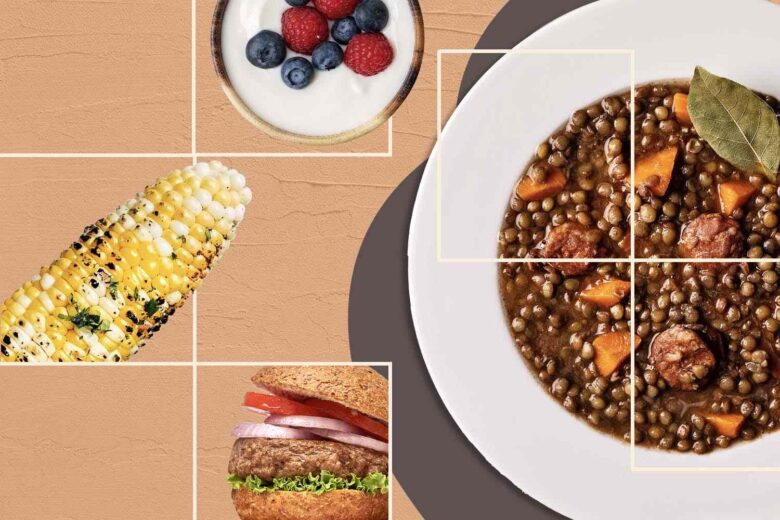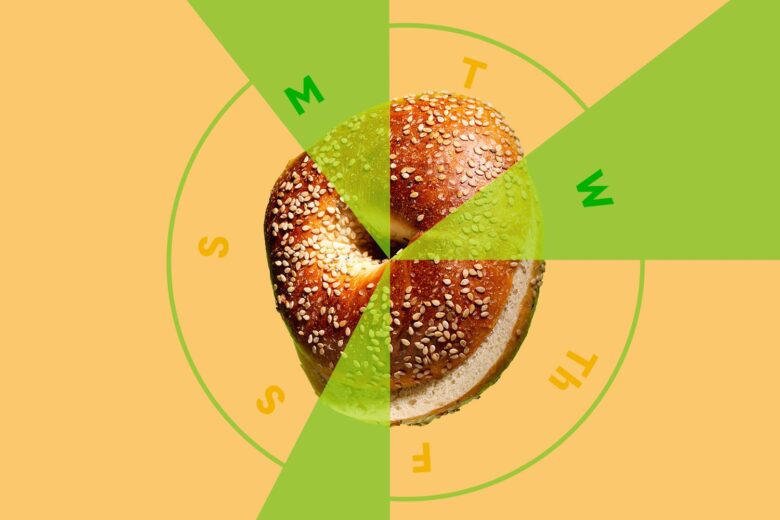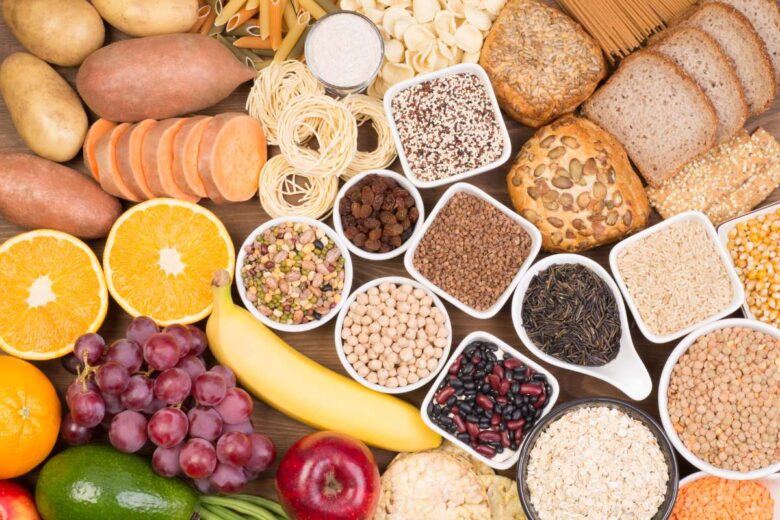If you’ve been following low-carb nutrition for a while, you may have heard of carb cycling.
Carb cycling is a form of low-carb dieting that involves splitting your diet into low-carb days and high-carb days — for example, having more carbs on Mondays and Fridays, and eating low-carb the rest of the week.
Carb cycling won’t get you into ketosis, but it’s popular among bodybuilders and people who find they don’t do well on a fully ketogenic diet.
Here’s how carb cycling works, how it’s different from a cyclical ketogenic diet, and why carb cycling may be right for you if you don’t feel your best on full keto.

Source: verywellfit.com
Contents
What is Carb Cycling?
Carb cycling is a low-carb eating plan in which you increase carbohydrate intake on certain meals, days, or weeks.
A typical carb cycling plan has 1-3 high-carb days per week, with low-carb days for the remainder of the week. Note: for the purposes of this article, low-carb means under 10% of calories, and high-carb means over 50% of calories.
Since most days are low-carb, carb cycling is considered a low-carb diet.
Well-designed low-carb diets — the ketogenic diet being the most prominent — are high fat, moderate protein, and, of course, low carbohydrate.
Protein is held constant when carb cycling. To balance energy intake on high-carb days, you adjust fat calories down. On lower-carb days, fat intake goes up again.
A lot of people who do carb cycling time pair their high-carb days with intense workouts. If you do Crossfit twice a week, those are the days to load up on sweet potatoes and rice, for example.
Standard carb cycling won’t get you into ketosis — the idea is that you keep your glycogen stores full, but that you also don’t overeat on carbs.
While standard carb cycling works well for some people, it won’t give you the benefits of ketosis. There is, however, a modified form of carb cycling that will keep you in ketosis most of the time while still allowing you some carbs. It’s called a cyclical ketogenic diet, and it’s a specific type of carb cycling that gives you the best of both worlds: extra carbs and the benefits of ketosis.

Source: ketogenicbuddies.com
The Cyclical Ketogenic Diet
The standard ketogenic diet (SKD) keeps you in ketosis all the time. Being in ketosis nets you a variety of benefits, including:
- Weight loss[*]
- Enhanced body fat utilization
- Cleaner energy — ATP — production (less oxidative stress)[*]
- Reduced inflammation[*]
- Better endurance[*]
- Clearer cognition[*][*]
By calories, a keto diet is about 60% fat, 30% protein, and 10% carbs[*].
The cyclical ketogenic diet (CKD) takes the SKD and adds 1-2 days per week of higher carb intakes. These days are called carb refeeds, and on them you usually eat about 150 grams of carbs.
Cyclical keto and other forms of carb cycling are popular with high-intensity athletes like CrossFitters, some of whom find that their workouts suffer when they’re in ketosis full-time.
Are There Benefits to Carb Cycling?
People commonly do carb cycling to enhance athletic performance. The idea is that eating carbs on workout days replenishes your glycogen (carb) stores, which gives you quick-burning fuel for hard workouts.
On top of that, some people who hit weight loss plateaus on a keto diet report that switching to carb cycling for a few weeks can help them break through the plateau and keep slimming down.
There isn’t much good research on carb cycling yet because it’s so new. That said, enough people say they do well with carb cycling that it’s worth considering the benefits they report.

Source: dmoose.com
Enhanced Exercise Performance?
Proponents of carb cycling claim that they get more out of their workouts when they eat carbs on high-intensity exercise days. They say they’re less likely to “bonk” — hit a wall where they run out of energy and can’t keep exercising.
A recent study looked into this exact claim. Researchers split athletic men into two groups — cyclical keto and standard keto — and put each group on an eight-week weight lifting and sprinting program. The SKD group ate strict keto for the duration, while the CKD group ate high-carb two days per week[*].
For body composition, full keto was the clear winner. People eating full keto lost more fat and maintained more muscle mass.
And, surprisingly enough, carb cyclers saw no performance benefit when it came to exercise.
To be fair, this is a single study, and people vary a lot when it comes to carb tolerance. That said, there’s no research so far to suggest that carb cycling gives you a physical edge over a regular keto diet.
Weight Loss?
There isn’t any clinical research on carb cycling for weight loss. However, there is a possible mechanism that could explain why carb cycling helps people break through keto weight loss plateaus.
High-carb meals cause you to release a large amount of leptin, your body’s main satiety hormone. High leptin levels make you feel full and stop eating[*].
An occasional high-leptin meal can help you feel satisfied, curb your hunger, make you eat less, and, over time, lose (or maintain) weight[*].
If you eat high-carb all the time, you run the risk of becoming leptin-resistant: your brain stops listening to leptin, with cravings and weight dysregulation soon to follow[*].
Prolonged low-carb dieting, on the other hand, may cause leptin levels to decrease over time. Low leptin may increase cravings and hamper your efforts to drop those last few pounds.
In theory, carb cycling could help. You could have a carb refeed once or twice a week to boost leptin and manage cravings, then return to low-carb to lose weight.
There isn’t any direct research to back this theory up, but enough people report success with carb cycling for weight loss plateaus that it may be worth a try.

Source: shape.com
How to Start Carb Cycling
If you decide to try carb cycling, follow these steps:
#1 Get Fat-Adapted
Stay low-carb (ideally ketogenic) for at least six weeks. This trains your cells to preferentially burn fat over glucose, and allows you to re-enter fat-burning mode more quickly following a carb refeed day.
#2 Pick A Carb Cycling Plan
There are many ways to carb cycle:
- Eat high-carb for 1-2 days per week, low-carb the rest (timed by activity level)
- Eat high-carb one week per month
- Eat high-carb one meal per day (like dinner)
Option A seems to be the most popular for most people.
#3 Figure Out Your Macros
On most carb cycling plans, you’ll have low-carb days and high-carb days.
By calories, low-carb days look something like: 60% fat, 30% protein, 10% carbs.
High-carb days should be around: 30% fat, 30% protein, 40% carbs.
Notice how protein stays constant, while carbs and fats rise and fall in relation to one another.
#4 Eat Low-Glycemic Carbs
Carb refeed days aren’t an excuse to binge on sugar. To minimize your insulin and blood sugar response on high-carb days, choose complex, fiber-rich carbs. Fiber helps keep blood sugar low and may improve cardiovascular health[*][*].
Recommended carbs include:
- Starchy vegetables like sweet potato, white potato, pumpkin, and squash
- Fibrous vegetables like artichokes, asparagus, and broccoli
- Berries like blueberries, raspberries, and strawberries

Source: exercisewithstyle.com
Example Carb Cycling Menu
On the most basic carb cycling meal plan, you eat high-carb 1-2 days per week. The other days are low-carb. Below are example menus for each:
Example high-carb day
Breakfast: 3 eggs with 1 cup potato hash (55 grams carbs)
Lunch: 4 oz chicken and 1 cup white rice in bowl with tomatoes and spices (60 grams carbs)
Dinner: 6 oz lean beef and 2 sweet potatoes served with mixed vegetables (60 grams carbs)
Example low-carb day
Breakfast: 3 eggs with 3 slices bacon and mixed vegetables (5 grams net carbs)
Lunch: 4 oz steak on mixed greens, topped with olive oil (0 grams net carbs)
Dinner: 6 oz salmon with avocado and mixed vegetables (10 grams net carbs)
Please note: this menu shows net carbs. (Net carbs = grams carbs – grams fiber). You only count net carbs.
These are just examples, though. The important thing is to get your macros right.
Bottom line
Carb cycling is still quite new, and without more research, it’s hard to say whether it’s good for you or not. If you want to try increasing your carb intake, start out by trying a cyclical ketogenic diet.
If that doesn’t feel like enough carbs, more traditional carb cycling may be for you. Give it a shot and track your performance, body composition, energy levels, and so on. And remember that everyone is different and that there’s no one-size-fits-all approach to nutrition. Experiment until you find a macronutrient combination that works for you.
